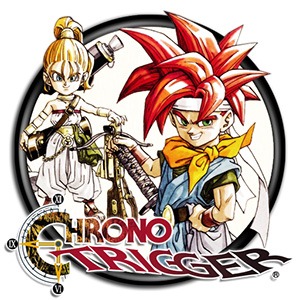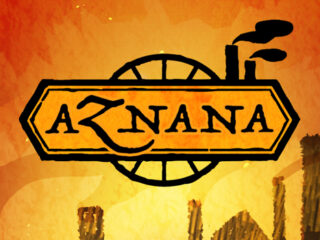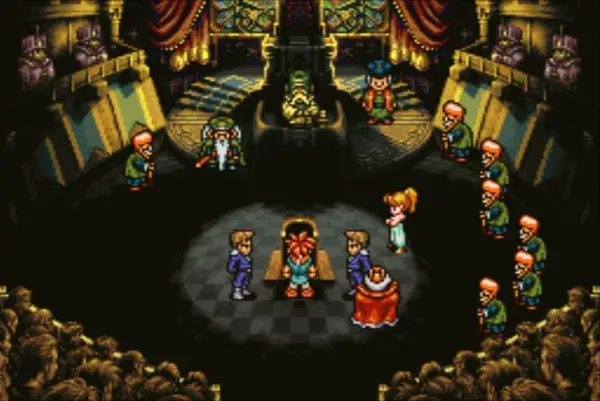NOTE: As of this writing there have been reports of many compatibility issues with tablets and newer phone models. The reviewer experienced very few problems playing the game on his Galaxy Nexus and has reviewed the game based on this. However, Square Enix promises that game patches are being worked on, so we suggest users make certain of their device’s compatibility with Chrono Trigger and potentially consider waiting until such a time as it has been patched.
 Originally released in 1995 for the SNES, Chrono Trigger has proven itself to have exceptional longevity for developer Square Enix, who have ported it repeatedly. And with good reason as, with its charming time travel concept, accessible fighting system, detailed characterization, and gorgeous soundtrack, it’s quite possibly the best RPG ever made. The game didn’t make it over to mobile without some wrinkles and a few very questionable design decisions, but the good news is Chrono Trigger is effectively intact on Android.
Originally released in 1995 for the SNES, Chrono Trigger has proven itself to have exceptional longevity for developer Square Enix, who have ported it repeatedly. And with good reason as, with its charming time travel concept, accessible fighting system, detailed characterization, and gorgeous soundtrack, it’s quite possibly the best RPG ever made. The game didn’t make it over to mobile without some wrinkles and a few very questionable design decisions, but the good news is Chrono Trigger is effectively intact on Android.
What first and foremost makes Chrono so great is the storyline, which is brilliantly paced and never gets too convoluted. It’s about a group of kids (and a robot and two adults) who stumble upon the ability to warp through time and discover that in the future the world is destroyed by a giant, porcupine-looking thing named Lavos. A synopsis like this makes the story sound silly and, well, it is, a bit. There’s a relaxed, playful approach to the core plot elements. Lavos isn’t developed deeply beyond being an ugly thing that wants to mess up the earth. And the time travel mechanic allows you to do nifty things like teach someone’s ancestor the importance of generosity by presenting her with some free spiced jerky; then you leap instantly forward 400 years to receive an integral item from a formerly greedy descendant.
Where the story does its important work is through its characters. Every member who joins your party has a backstory that gets explored. While that may not sound too unique for a JRPG, it’s different because, despite it being a time-travel game, the characters’ conflicts stay grounded. Basically, all of them have family issues and, though Chrono ostensibly follows a conventional “save the world” plot, it’s also very much a tale about forming a new family. It’s this aspect that has made it so timelessly endearing.
Graphically, the game looks as good as it ever has, which is to say, it’s 16-bit. The visuals may seem dated to some, but they’re certainly varied. Each time period has a vastly different look, from the lush green backgrounds of present day to the polluted, grey apocalyptic landscape of the future. The animation is jerky and simplistic, but, well, it’s old.
Sound effects are simple digitized noises, but the soundtrack, though performed by midi instruments, is a diverse, epic collection of hugely memorable tunes. You’ll probably hear the battle themes too many times, but this is ultimately an incredible score you may find yourself listening to independently of the game. Something a bit unfortunate is that, in the Android port, the music doesn’t loop. Instead, tracks fade out and then start up again.
Another reason Chrono has stuck around so long is its accessible gameplay. It’s generally clear if a weapon or piece of armor is better than the one you currently have equipped, so customization doesn’t go much further than picking accessories (some affording stat boosts, others negating status effects). The other factor is deciding who to keep in your party. You can only have a party of three and, as you level up, they learn different techs (the equivalent of magic). Characters have individual techs, but can also perform double and triple techs that allow them to gang up on enemies or heal the entire party. Different techs are possible with different character combinations. The tech system is a unique feature of the fighting system and easily its coolest.
A significant portion of the game is linear, always making your next objective clear. Awesome sidequests that further develop the characters show up in the game’s latter portion, but, before that point, it’s pretty RPG fare: shop, fight, repeat. It’s less impressive now, but one of Chrono’s innovations was the ability to see enemies onscreen, therefore allowing you to choose whether to enter into encounters (though enemies still ambush you regularly). On the whole, the gameplay isn’t difficult to understand, but doesn’t hold your hand either. Admittedly, you’re likely to grind through a lot of strategy-free battles where you just attack repeatedly, but you’ll periodically hit areas of surprisingly tough enemies and boss fights are consistently tense and challenging.
The controls had to be adapted to touch screens. Maneuvering is done with a phantom d-pad that appears wherever you set your finger down. You then drag slightly to walk and further to run (you can also set the controls to “always run” or “always walk”). You tap anywhere to interact with what’s directly in front of you. It’s not the most precise control. You’ll often find yourself having to adjust your position so you’re correctly lined up with the NPC, switch, or chest you’re aiming for, but you gradually acclimate.
Fighting feels less intuitive and takes longer to get used to. Swiping up and down moves between your available actions (Attack, Tech, or Item). Swiping left or right selects which ally or enemy you’re targeting. You tap to execute the action. In the heat of battle, it can be difficult to control with finesse and more than once my swipe was registered as a tap and vice versa. For later boss fights, this can be a huge problem, but, again, the more you play, the more natural it feels. Still, the sensation that Chrono’s meant to be played with a controller never completely goes away. That said, shops, conversation options, and status screen navigation have arguably been rendered more fluid than ever as everything is controlled with large, tappable menu buttons.
Several issues make Chrono less than ideal for mobile gaming. It uses save points and it can be a long while between them. To compensate, a bookmarking system has been introduced which creates a temporary save and quits the game. This save is automatically deleted once you resume playing. This is helpful, but not perfect as you’re unable to bookmark during cut scenes or battles. Also, when you resume, you’re returned to the entrance of whatever location you were in and, typically, all the enemies respawn. On a more positive note, the game had no trouble picking back up where I left it if I cycled to another app or got interrupted by a phone call. But it would lose my progress if I shut off my display, which is an issue that can hopefully be patched.
Without question the worst sin that Square Enix has committed with this port is the game’s sporadic need to (seemingly at random) connect to the web to authenticate when booted up. It only takes a second, but, if you’re without network access, which is plausible when in transit, the game will not run. Stranger still are the incidents where you’re abruptly informed the game needs to download more content before it can continue. These points are rare, but considering Chrono originally came on a cartridge with a capacity around 6 MB, this just seems like another excuse for Square Enix to make sure you’re not pirating.
With its phenomenal narrative, attractive settings, accessible gameplay, and incredible music, Chrono Trigger is a game everyone should experience. With its occasionally unwieldy controls and imperfect save system, this isn’t the most solid version out there, but it’s still an extremely playable port. The most egregious development is the game’s need to be regularly authenticated. $9.99 is a steal for one of the greatest games of all time and, though Square Enix should be commended for releasing AAA titles on mobile devices, this authentication nonsense is inexcusable. If they want this market’s loyalty, they need to trust us first.
Is it Hardcore?
As it gets.
The controls and save system aren’t exactly mobile-friendly, but this is still a remarkably solid port of the best RPG ever made. However, the fact that you have to periodically connect to the web to authenticate is pretty offensive.






























